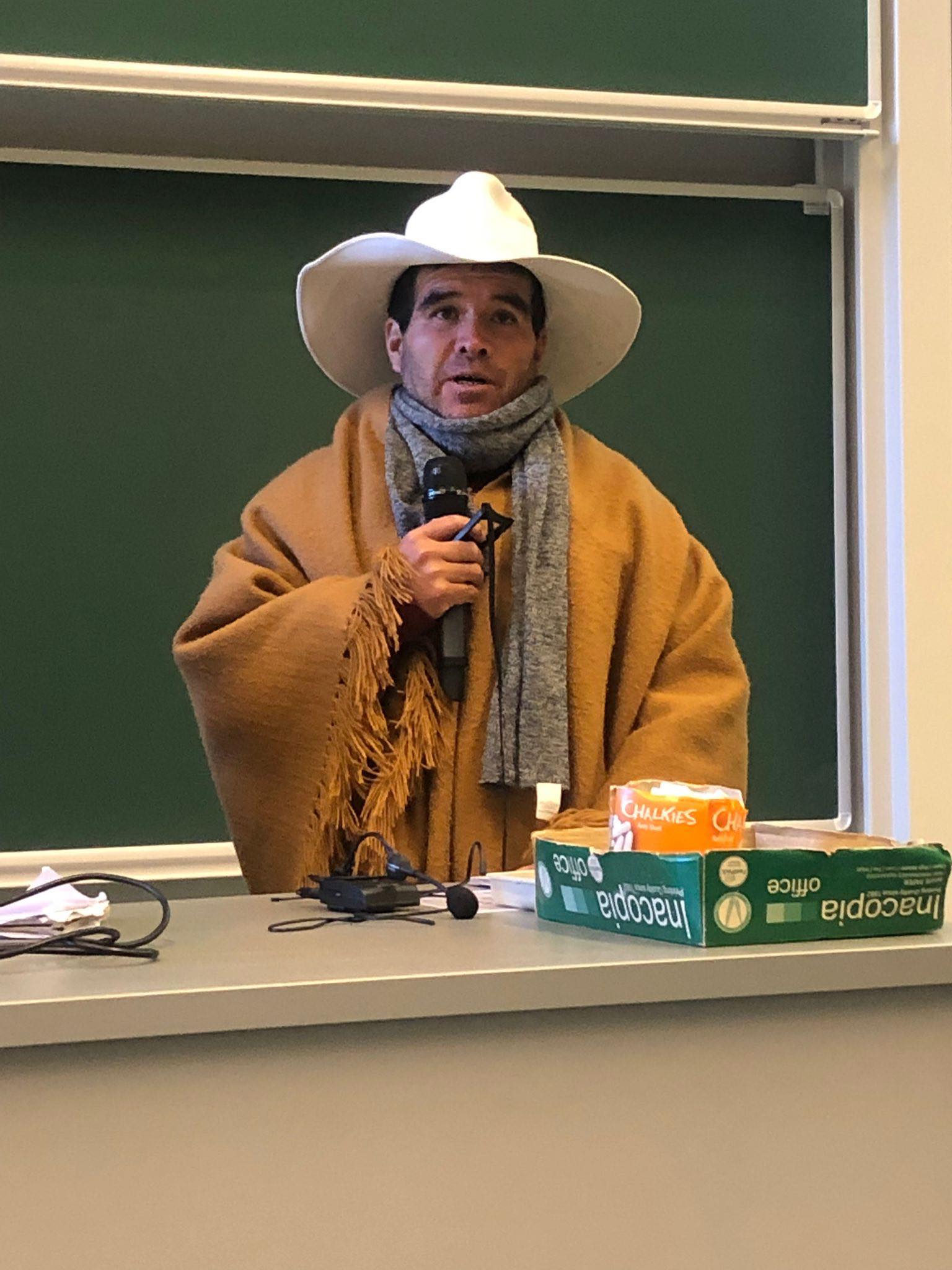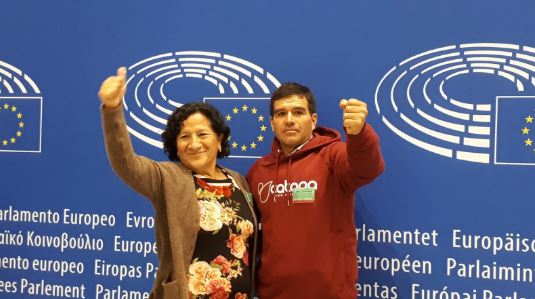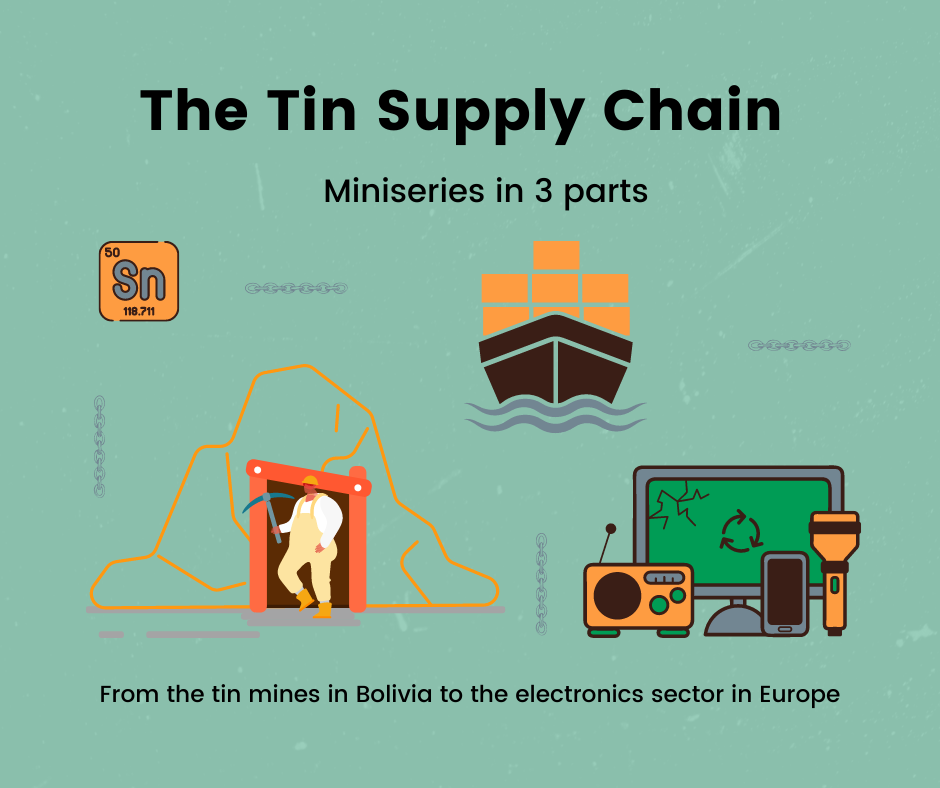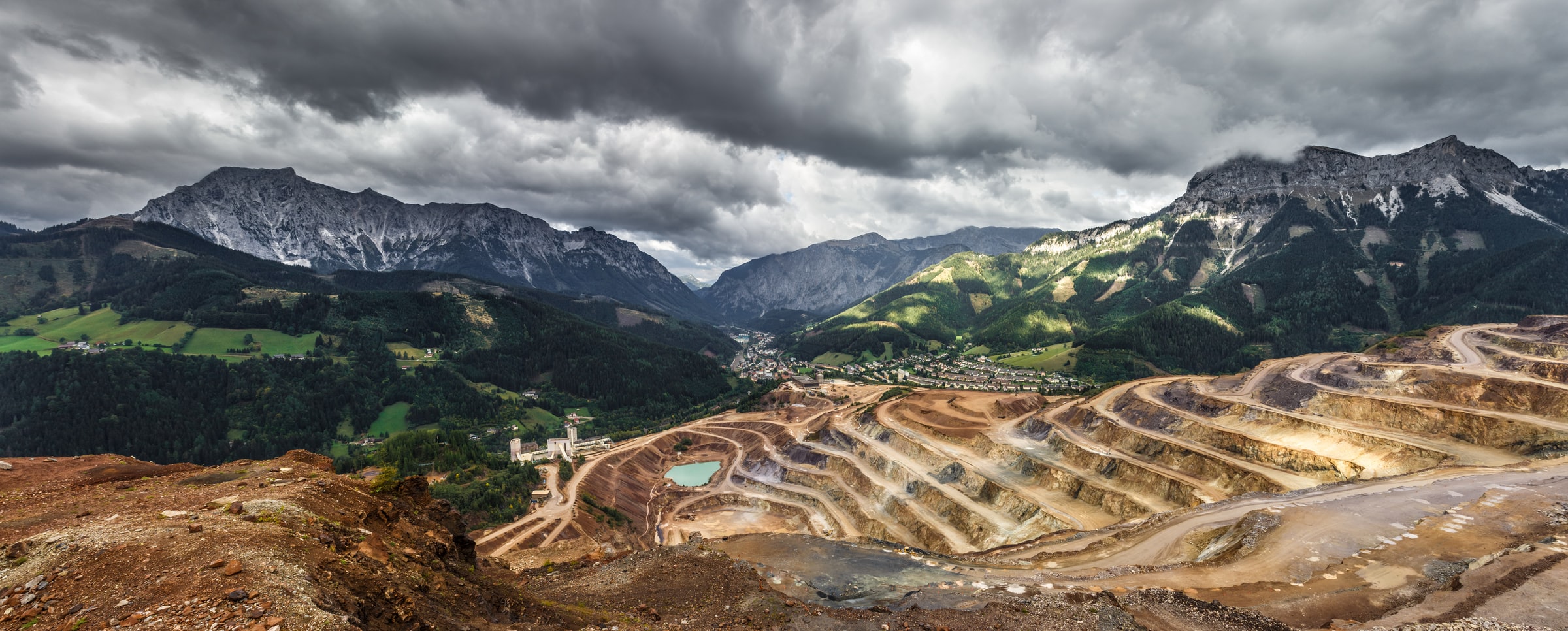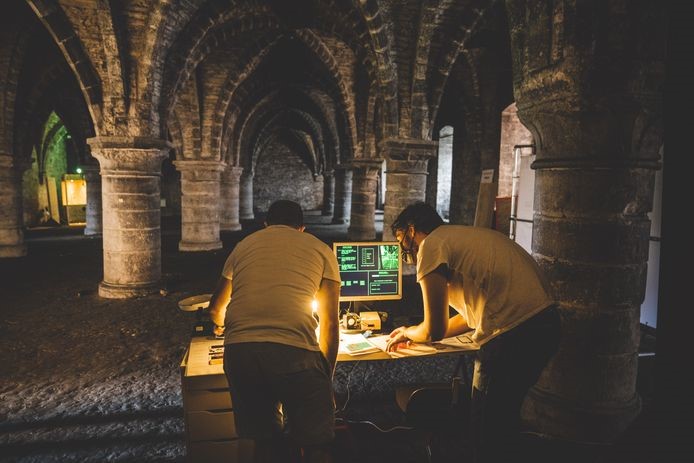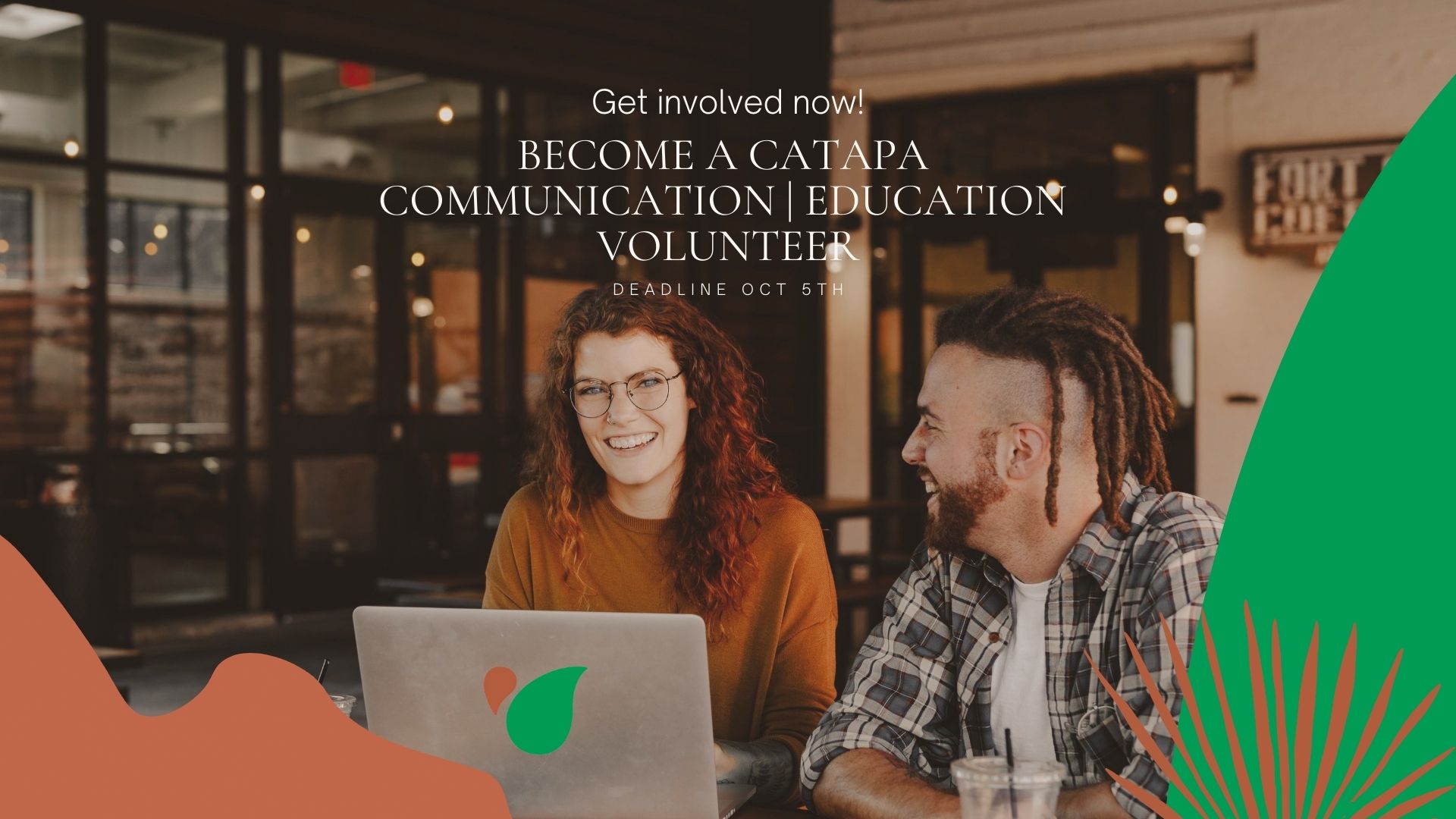En El Nombre Del Litio – Clean Energy, For Who?
En El Nombre Del Litio: Clean Energy, For Who?
I’m the one who goes meandering through the hills
Watching life grow
With eyes of water that see the birth and death of time
I am healing the wounds of being
Don’t kill me or poison me
Don’t make me part of that suffering
You are death, I am life
You are the lithium, I am the feeling of the pacha
CATAPA held a screening of the documentary ‘En el Nombre del Litio’ at Studio Skoop, Gent on the 29th March as part of Belmundo Festival 2022.
Eighty percent of the world’s lithium reserves are located in the ‘Lithium Triangle’; the salt flats that connect Argentina, Bolivia and Chile. The film depicts the disastrous consequences of lithium extraction for the indigenous communities of the Salares Grandes. Producing a single ton of lithium carbonate requires two million litres of water. And where is this lithium going? Each electric vehicle, central to the EU’s ‘green transition’ away from petrol and diesel based private transport, contains 4.5 kilograms of lithium.
“¿Energía limpia para quién?” (Clean energy for who?) (Clemente Flores, El Moreno)
After the screening, participants were challenged by Yblin Escobar Roman (CATAPA) to think about the connections between the documentary and material consumption within the European Union and Belgium. Under the guise of ‘green mining’, the EU’s Critical Raw Materials list outlines a strategy for the resourcing of over thirty mined resources, such as lithium, deemed ‘necessary’ for the green transition. To fund the ‘green transition’, by 2050 the EU will require sixty times more lithium for electric vehicle batteries and energy storage versus current supply.
Electric vehicles are not the solution to our climate crisis. Our push for ‘green mobility’ is steeped in the same extractivist logic that views our planet as an inexhaustible resource to be mined and dominated by humankind. But this fails to understand the fundamental contradiction:
We cannot mine our way out of the climate crisis

This contradiction is at the heart of ‘El Nombre Del Litio’. Due to the harsh conditions, only microorganisms are adapted to survive within the Salar basin. Living under the salars, colonies, or ‘forests’ of microorganisms engaging in photosynthesis, have served as a carbon sink for over 3.5 billion years, releasing oxygen and creating our ozone layer. Yet, in the name of tackling the climate crisis, transnational corporations are extracting vast quantities of water from the basin, starving and destroying the very microorganisms that allow our continued existence on Mother Earth.
A Just Transition to Accessible, Carbon Zero Transport
Rather than maintaining the status quo by switching to electric cars, a just transition requires a fundamental re-organisation of our cities and communities towards zero emission public, not private transportation. Transportation accounts for 27% of global emissions.C40 Cities argue limiting global warming to 1.5 degrees celsius requires doubling public transport use within cities by 2030.
Despite this, De Lijn’s latest plans will oversee the removal of 1 in 7 bus stops in Ghent – around 200 in total. Zonder Bushalte Straat, an action group campaigning against these changes, argues this will inevitably prevent older and less mobile citizens from accessing and traversing the city.
A Just Transition to the Right to Say No
The documentary also emphasises that a just transition requires indigenous and local communities having the Right to Say No to mining. Local communities must not only have the decisive, legally binding say over the fate of mining projects, this must be respected.
I was born in the countryside,
I am the son of a peasant
I defend my tradition,
Of all the Argentine north
My father is the Chañi mountain
My mother the white Salar
During the documentary, the indigenous communities discuss Kachi-Yupi (literal translation: salt tracks), a document they collectively produced for the consultation process.Together with international laws on Free, Prior and Informed Consent, this document demands mining companies must seek approval from all of the indigenous communities of the Salinas Grandes and Laguna de Guayatayoc basin before proceeding with an activity or project. Despite promises, the document was never formalised into an official decree. Instead, the Argentinian state transferred ownership of the lands to JEMSE to pursue lithium extraction for the sake of ‘development’ without consent.
“If communities aren’t participating actively in the state, the state is meaningless’ (Clemente Flores, El Moreno)
Companies also seek ‘Social Licence to Operate’ by dividing communities with false promises of jobs, development and security. In the documentary, EXAR promised lithium mining would directly and indirectly provide around eight hundred jobs to the local community for over thirty years.
Whilst large-scale mining projects may provide jobs in the short term, the long-term destruction is incomparable. The loss of water is disrupting pastoral agriculture, an activity the community has relied on for thousands of years. Once mining projects are completed, the jobs are also taken with them, leaving behind a community contaminated and fractured by violence and conflict.
“Mining is bread for today, but hunger for tomorrow” (Gil Cruz, Susques)
In response, the indigenous communities of the Salinas Grandes and Guayatayoc Lagoon mobilised to protest the violation of international law on indigenous rights, the failure to consult the collective assembly by lithium mining companies operating in Quebraleña territory and to demand an end to all mining activities in the area.
“I give my life for the Salar. I cannot accept this.If you want, kill me first. Then you will pass through the Salar.” (Veronica Chavez, Santuario Tres Pozos)
Our transition to sustainable energy must only be green, but just. This cannot be achieved through our current path of continued extractivism, which promises nothing but destruction. We are at a crossroads. Rather than extracting lithium for electric cars, our society must be based on social and environmental justice where the extraction of non-renewable resources is no longer necessary.
Water, little water
They call me and they think of me
Water, little water,
They say to me as I pass by
Protect our place
Well chayadita my soul will remain
With the dance of the suris I’ll stop
With the trot of the vicuñas I will follow
With the condor I will fly
In the rain over the Andes I will return
Jallalla!
En El Nombre del Litio is produced by Calme Cine & FARN, and directed by Tian Cartier, Martín Longo and Pía Marchegiani. You can read more about the film and indigenous communities fighting against lithium mining on their website: https://enelnombredellitio.org.ar
*This documentary was screened as part of Cinema Belmundo 2022. Cinema Belmundo is a collaboration between various organisations that show films to make an impact. This year, the collaboration consists of Studio Skoop Cinema, 11.11.11, Amnesty International, BOS+, Broederlijk Delen, Dierenartsen Zonder Grenzen, FOS ngo and JEF.
Written by Catapista Connor Cashell
Sources:
An Van Bost (2021) ‘Ghent action group fights to preserve bus stops in and around Ghent with symbolic action’, VRT, 21 June. Available at: https://www.vrt.be/vrtnws/nl/2021/06/21/een-deel-bushaltes-in-en-rond-gent-dreigt-te-verdwijnen/ [Accessed 30 March 2022].
Bankwatch Network (2021). Raw Deal: Does the new EU development model mean more of the same destructive mining? Available at: https://bankwatch.org/wp-content/uploads/2021/01/RAW_DEAL.pdf [Accessed 30 March 2022].
C40 Cities, International Transport Workers’ Federation (2021). Public transport global coalition statement. Available at: https://www.c40.org/wp-content/uploads/2021/11/Global-coalition-statement-ENG.pdf [Accessed 30 March 2022]
En El Nombre Del Litio (2021) Directed by T. Cartier, Longo. M and Marchegiani.Pía [Film]. El Salvador, Argentina: Calme Cine.
European Commission (2020) ‘Critical Raw Materials Resilience: Charting a Path towards greater Security and Sustainability’. Available at: https://eur-lex.europa.eu/legal-content/EN/TXT/?uri=CELEX:52020DC0474 [Accessed 30 March 2022]
European Environmental Bureau, Friends of the Earth Europe (2021)
‘Green mining is a myth’: the case of cutting EU resource consumption.
Available at: https://eeb.org/wp-content/uploads/2021/10/Green-mining-report_EEB-FoEE-2021.pdf
[Accessed 22 March 2022].
FARN & Calma Cine (2021) En el Nombre Del Litio. Available at: https://enelnombredellitio.org.ar/home-2-en/. [Accessed: 30 March 2022].
Kachi-Yupi (2015) Salt Traces: Free, Prior and Informed Consultation and Consent Procedure for the Indigenous Communities of the Salinas Grandes and Laguna de Guayatayoc Basin. Available at: https://naturaljustice.org/wp-content/uploads/2015/12/Kachi-Yupi-Huellas.pdf [Accessed 30 March 2022].
United Nations, Department of Economic and Social Affairs: Indigenous Peoples (2016) Free Prior and Informed Consent – An Indigenous Peoples’ right and a good practice for local communities – FAO. Available at: https://www.un.org/development/desa/indigenouspeoples/publications/2016/10/free-prior-and-informed-consent-an-indigenous-peoples-right-and-a-good-practice-for-local-communities-fao/ [Accessed 30 March 2022]
Zonder Bushalte Straat (2022) [Facebook]. Available at: https://www.facebook.com/zonderbushaltestraat/ [Accessed 30 March 2022].





